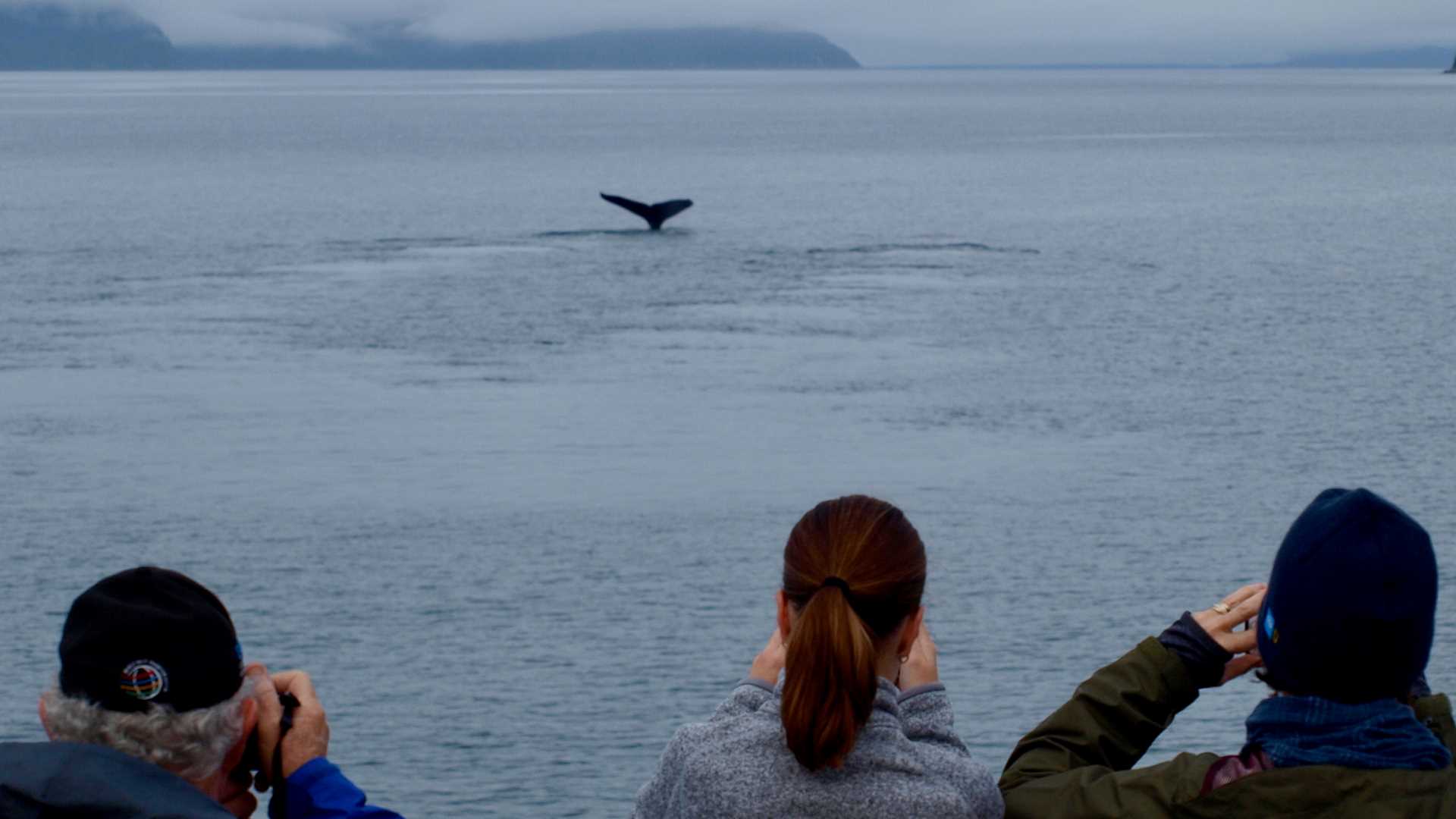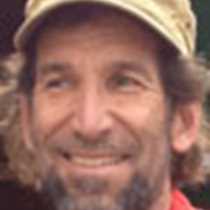This morning found us along Icy Straight, under calm, cloudy, and misty conditions and just coming to border Glacier Bay National Park. A pair of humpback whales greeted the early risers as they slowly cruised the waters along with us, giving us a chance to watch and hear them nearby; one, two, three, even four breaths then a show of flukes, dive for three, four, five minutes, then resurface.
Morning activities began after we anchored in Fern Harbor, on the southwestern side of the National Park. Glacier Bay was established as a national monument in 1925 and then a National Park in 1980, recognized for its unique landscape and wilderness character. Here the extent of glaciers has ebbed and flowed in dramatic ways, not only as part of the last retreating ice sheets 10,000 years ago, but even through the last several centuries, exhibiting the delicate balance between snow and ice accumulation in the mountains, and melting and loss where the ice meets the sea. Near the outwash plain of Brady Glacier we had opportunities for several different hikes and boat tours. Evidence of abundant wildlife was everywhere; bear and moose are especially abundant on these lands. Beach, forest edge, meadow, muskeg, and forest all come together here where we saw many interesting plants and animal signs.
Emily Pickering gave an engaging and informative presentation on pinnipeds (seals, sea lions and walrus), which set the stage for our afternoon boat tours of the Inian Island and the chaotic currents where Icy Strait meets Cross Sound. The Pacific Ocean floods and ebbs quickly in these passages to supply water to Alaska’s interior waterways, creating a productive environment for kelp and fish, where not only sea lions thrive, but also sea otters, humpback and killer whales, pelagic cormorants, gulls, and eagles, who all find abundant food here and a good place to live.
By the end of the day the skies had cleared, with excellent views of the Fairweather Range, surrounding hills and island, and finally the long drawn out sunset of summer in high latitudes which sent us on our way to tomorrow’s explorations.









